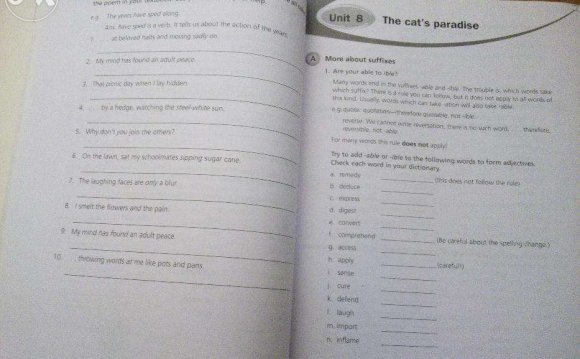
About this SiteI wrote the materials on this web site as supplemental reading for my Modern English grammar class at the College of DuPage. I keep most of my materials freely available for everyone interested in English language studies, but teachers, publishers, schools, webmasters, and bloggers wishing to use my work should read the terms of use. The contents below are divided into
A Review of the Structure of Modern English Grammar
Some Common Usage Errors among First-year University StudentsThese studies below are based on the research of Robert Connors and Andrea Lundsford, "Twenty Common Usage Errors." Discussing the usage of a comma after an introductory adverb, prepositional phrase, or subordinate clause. Describing and explaining some of the sources and solutions to reference problems with pronouns. Coordinators linking main clauses often use a comma. The page explores the range of possibilities. A study of the different reasons that writers occasionally use the wrong word. A study of the punctuation practices and traditional regarding nonrestrictive modification in phrases and clauses. Focusing on the origins of problems with inflectional word endings. Discussing problems with prepositions, including the "never end a sentence with a preposition" issue. A look at the origins and solutions of the comma splice (sometimes called the comma fault). A detailed study into the use of the possessive apostrophe to mark the genitive case. This page uses corpus data to study the trends in both American and British English. Discussing the origins of this usage issue in spoken and written English. Also known as the point of view (POV) shifts. Describing the notions of person and point of view in spoken and written English and how speakers and writers will make unnecessary/confusing changes in person. Exploring some of the issues surrounding this commonly confused pair of words.Download a few of my papers applying linguistics and grammatical analyses to literary art. Some of these are published; some are forthcoming. Exploring the functions of the lexicon, morphology, and word order in helping humans recognize constituency and grammatical structure. Comparing the grammar checking abilities of two popular word processors Corel's WordPerfect and Microsoft's Word. Can those programs find twenty common usage errors? A study of the discourse functions served by thematic organization and information focus in the prose of college writers, originally published in Linguistics and Education 2, 231-258 (1990). A study of the syntactic and semantic changes in the usage of the word. A study in gradience, originally published in The Twentieth LACUS Forum 1993, Lake Bluff, IL: Jupiter Press, 1994, pp. 315-332. A paper originally presented as a plenary lecture for the International TESOL-ELT Conference at Moscow City Pedagogical University, Samara, Russia, 6 May 2002. Read what professional linguists and educators are saying about this recent version of an old debate. Several professors of English discuss, quite specifically, the issues surrounding the teaching of English grammar: what should be taught, why and how. An interesting informal discussion from the Assembly for the Teaching of English Grammar email list. Originally published in 1991 in an introductory linguistics textbook, my chapter on child language acquisition presents an overview of language development from the cradle to adulthood. I present this here since many students of modern English grammar are also interested in questions about the development of grammatical structures. Although now out of date, this chapter may still provide some background to this area of study.
Tools for Text AnalysisThis tool will allow you to search for and replace any letter, word, or phrase in a sample of text that you supply. Such a tool can help you discover how changes in the lexicon or even punctuation can influence style. Suggestions for use are presented. |
MORE TRANSLATION VIDEO
![[PDF Download] Modern English for the Automotive Industry](/img/video/pdf_download_modern_english_for_the.jpg)











